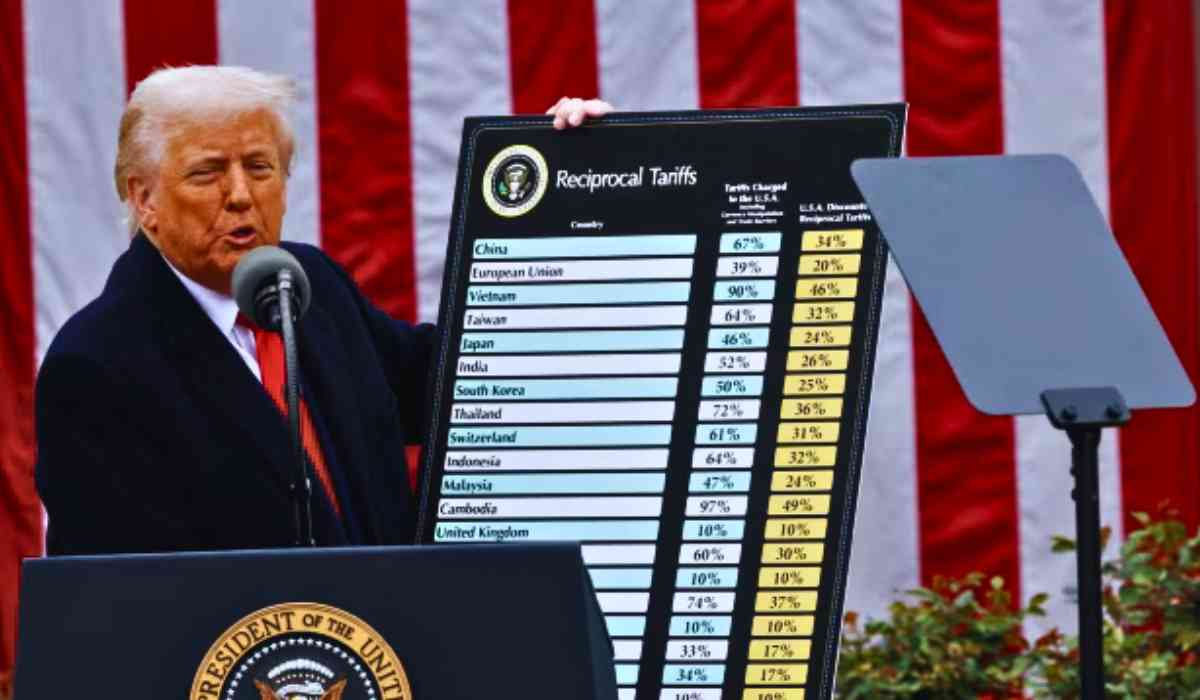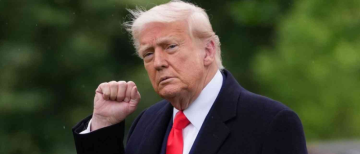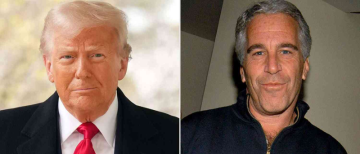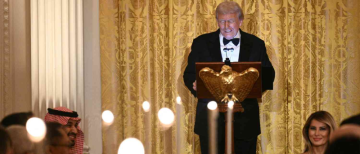In recent weeks, President Donald Trump has reaffirmed his commitment to imposing tariffs on imports into the United States. This move has sparked significant market uncertainty and raised questions about the future of global trade. As the world watches, it's essential to understand what these tariffs mean and how they might affect economies worldwide.

What Are Tariffs?
Tariffs are taxes imposed on goods imported from other countries. They can make foreign products more expensive for consumers, which can help protect domestic industries by making their products more competitive. However, tariffs can also lead to higher prices for consumers and potential retaliation from other countries, which might impose their own tariffs on U.S. exports.
Types of Tariffs
-
Ad Valorem Tariffs: These are based on the value of the imported goods. For example, a 10% ad valorem tariff on a $100 item would add $10 to its cost.
-
Specific Tariffs: These are based on the quantity of the imported goods. For instance, a specific tariff might add $5 per unit of a particular product.
-
Compound Tariffs: These combine both ad valorem and specific tariffs. For example, a tariff might include both a percentage of the value and a fixed amount per unit.
Trump's Tariff Plan
On April 2, 2025, President Trump announced a 10% universal tariff on almost all imports to the U.S., effective April 5, 2025. Additionally, he plans to increase tariffs to between 11% and 50% for goods from 57 countries identified as engaging in nonreciprocal or discriminatory trade practices. These higher tariffs will take effect on April 9, 2025.
Key Aspects of the Plan
-
Universal Tariff: This applies to most imports, aiming to reduce the U.S. trade deficit and protect domestic industries.
-
Targeted Tariffs: Higher tariffs on specific countries are intended to address perceived unfair trade practices and encourage these countries to negotiate more favorable trade agreements.
Why Is Trump Doing This?
President Trump argues that these tariffs will help U.S. manufacturers by making foreign goods more expensive and thus protecting American jobs. He believes that other countries have taken advantage of the U.S. through unfair trade practices, and these tariffs are a way to level the playing field.
Historical Context
The U.S. has historically been a strong advocate for free trade, but recent policies reflect a shift towards protectionism. This change is partly driven by concerns about job losses in industries heavily impacted by imports.
Impact on the Market
The announcement of these tariffs has led to significant market uncertainty. Stock markets have experienced volatility, and there are concerns about a potential recession in the U.S. due to these measures. Other countries, including Canada, China, and the European Union, have announced counter-tariffs, which could further escalate trade tensions.
Economic Implications
-
Inflation: Higher tariffs can lead to increased prices for consumers, contributing to inflation.
-
Trade Wars: Retaliation from other countries could lead to a cycle of escalating tariffs, harming global trade and economic growth.
-
Job Market: While tariffs might protect some jobs in domestic industries, they could also lead to job losses in sectors heavily reliant on imports.
The Global Trade Landscape
The imposition of tariffs reflects a broader shift in global trade policies. The U.S. is not alone in its protectionist stance; other countries are also reevaluating their trade relationships. This trend raises questions about the future of globalization and whether countries will continue to prioritize open trade or focus more on domestic industries.
Globalization vs. Protectionism
-
Globalization emphasizes free trade and economic interdependence among nations. It has led to significant economic growth but also raised concerns about job losses and inequality.
-
Protectionism involves policies like tariffs to protect domestic industries. While it can safeguard jobs, it may also lead to higher prices and reduced economic efficiency.
Effects on Consumers and Businesses
-
Consumers: Tariffs can lead to higher prices for imported goods, affecting everything from electronics to clothing. This could reduce consumer spending power and impact economic growth.
-
Businesses: Companies that rely heavily on imports might face increased costs, which could lead to higher prices for consumers or reduced profit margins. On the other hand, domestic manufacturers might see an increase in demand as their products become more competitive.
Small Businesses
Small businesses, particularly those reliant on imports, might face significant challenges due to increased costs. However, some small manufacturers could benefit from reduced competition from cheaper foreign goods.
Global Reactions
Countries affected by these tariffs are considering various responses. Some are imposing their own tariffs on U.S. goods, while others are negotiating to avoid further trade disputes. This situation highlights the interconnected nature of global trade and the potential for widespread economic impacts.
Diplomatic Efforts
-
Negotiations: Countries are engaging in diplomatic efforts to resolve trade disputes and avoid further escalation.
-
Multilateral Agreements: There is a push for new or revised trade agreements that could address concerns about fairness and reciprocity in trade.
Conclusion
As President Trump stands firm on his tariff plans, the world waits to see how these policies will unfold. While the intention is to support U.S. industries, the broader implications for global trade and economic stability are significant. Whether these measures will achieve their intended goals or lead to unintended consequences remains to be seen. One thing is certain: the coming months will be crucial in determining the future of international trade.
What Do You Think?
Share your thoughts on how these tariffs might affect your community or business. How do you think countries should balance protecting domestic industries with maintaining open trade relationships? Let's discuss in the comments below!
For those interested in learning more about tariffs and their impact on global trade, here are some additional resources:
-
World Trade Organization (WTO): Offers insights into global trade policies and agreements.
-
U.S. Trade Representative: Provides updates on U.S. trade policies and negotiations.
-
Economic News Outlets: Websites like Bloomberg and The Economist offer in-depth analysis of trade policies and their economic implications.
Understanding these resources can help you stay informed about the evolving landscape of global trade.
With inputs from agencies
Image Source: Multiple agencies
© Copyright 2025. All Rights Reserved Powered by Vygr Media.





























